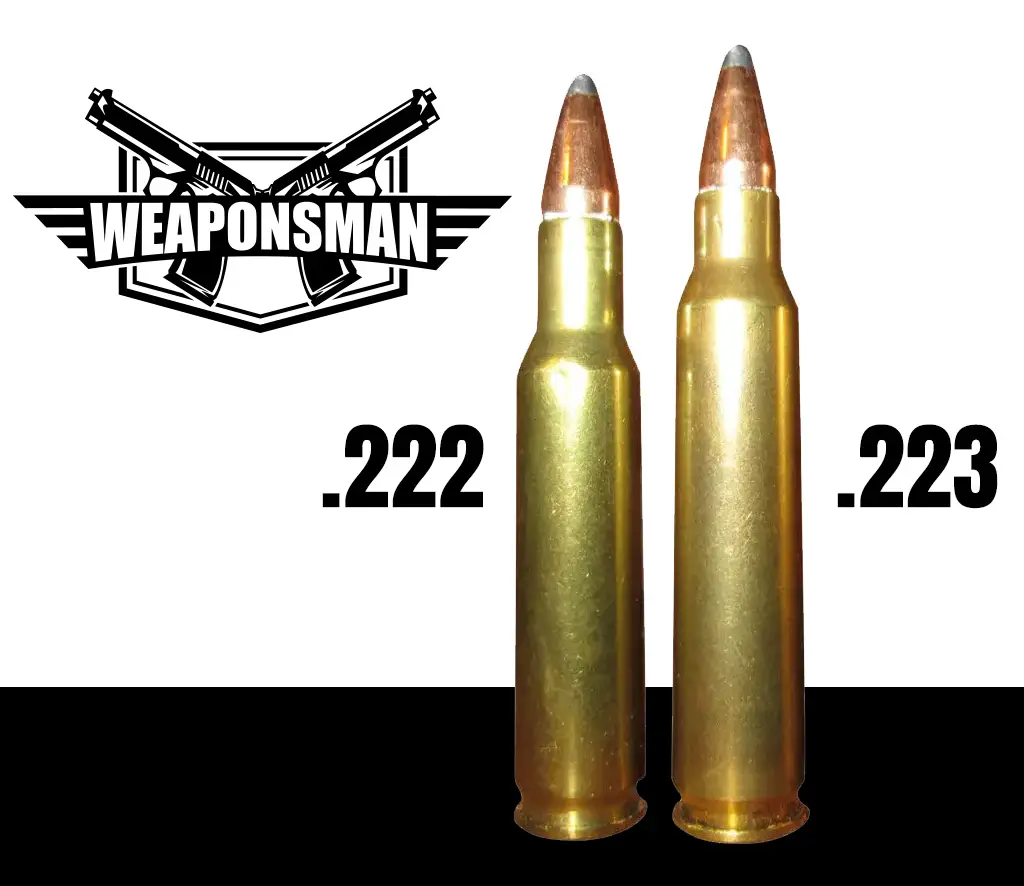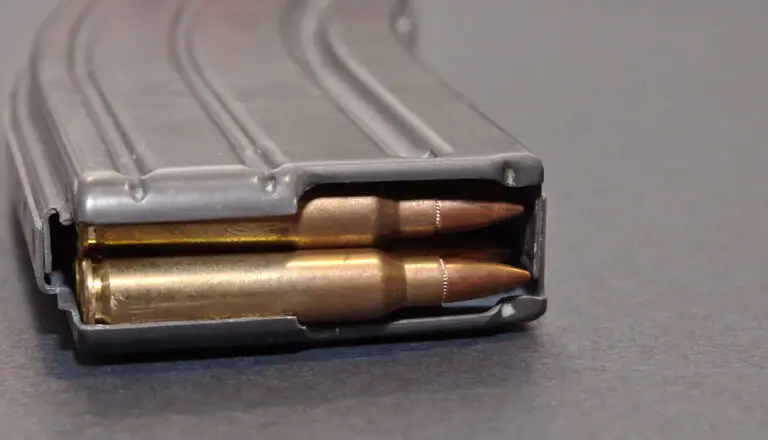When it comes to choosing the perfect firearm for your hunting needs, it’s essential to explore all the nuances and subtleties that differentiate one caliber from another. In this extensive review, we’ll take an in-depth look at the Remington .222 and .223 calibers. These two calibers have garnered their own dedicated followings, each with its own unique set of attributes that cater to specific shooting preferences. By the time you finish reading this article, you’ll be equipped with the knowledge necessary to make an educated decision about which caliber aligns best with your shooting requirements.
Historical Background behind both the 222 & 223 calibers
Before we delve into the nitty-gritty details, let’s take a moment to appreciate the history behind these two remarkable calibers. The .222 Remington, introduced in 1950 by the inventive mind of Mike Walker, was originally conceived during a shooting competition in upstate New York. Walker was using a Remington Model 722 rifle when inspiration struck, leading to the birth of the .222 rounds. Initially designed for varmint hunting and benchrest shooting, the .222 quickly gained a reputation for its minimal muzzle blast and reduced barrel erosion, setting it apart from its competition.
Seven years later, in 1957, Remington unveiled the .223 caliber, designed with a specific purpose in mind—serving as one of the preferred rifle rounds for the United States Army. This new cartridge was created to combine a small caliber with high velocity. The Remington Model 760 rifle, introduced in 1963, became the pioneering platform chambered for .223 rounds, laying the foundation for a new era of firearms.
Caliber Spec

| .222 | .223 | |
| First Produced | 1950 | 1964 |
| Case Type | Rimless | Rimless |
| Bullet Diameter | .224 in (5.7 mm) | 0.224 in (5.7 mm) |
| Overall Length | 2.130 in (54.1 mm) | 2.26 in (57 mm) |
| Max Pressure | 50,000 psi (340 MPa) | 62,366 psi (430.00 MPa) |
| Velocity (60 gr) | 2,937 ft/s (895 m/s) | 3,160 ft/s (960 m/s) |
| Energy (60 gr) | 1,150 ft lbf (1,560 J) | 1,325 ft lbf (1,796 J) |
Firearms Chambered in Each Round
Let’s explore the exciting world of firearms that are designed to accommodate the Remington .222 and .223 rounds. These firearms cater to a wide array of shooting disciplines, from varmint hunting to bench rest shooting, target practice, and even competition shooting. It’s crucial to acquaint yourself with the available options for each caliber to make an informed choice that perfectly aligns with your shooting preferences.
Firearms Chambered for Remington .222 Rounds:
- Savage Model 25: The Savage Model 25 stands as a popular choice among aficionados of the Remington .222 caliber. This rifle is a standout option for those seeking to engage in varmint hunting. If your goal is to protect your crops or other valuable assets from invasive critters, this rifle is a steadfast companion.
- CZ-USA 527 Lux: While primarily designed for benchrest shooting, the CZ-USA 527 Lux can prove its worth in varmint hunting as well. Most of these rifles come equipped with a shot capacity of 5+1 rounds, ensuring you have ample firepower at your disposal.
- Ruger No 1 Varmint: For those who place a premium on reliability, the Ruger No 1 Varmint rifle stands as an exemplary choice. Ruger, a name synonymous with quality firearms, offers a reliable platform for veteran varmint hunters. Some models even feature 1-inch rings to accommodate scopes, enhancing your accuracy and target acquisition capabilities.
Firearms Chambered for Remington .223 Rounds:
- Ruger American Ranch: Returning to the renowned Ruger brand, we find another exceptional rifle, this time chambered for Remington .223 rounds. This rifle serves as a dedicated varmint hunting platform with its bolt action mechanism. What sets it apart is its affordability, making it an attractive choice for budget-conscious shooters. Accuracy, reliability, and consistent performance are its hallmarks, making it an ideal companion for any day in the field.
- FN Herstal SCAR16: Originating as a military rifle, the FN Herstal SCAR16 soon saw civilian adaptations. This semi-automatic rifle boasts impressive accuracy for its short barrel length. Its reliability is nothing short of flawless, with no reports of jamming or misfiring. Comfortable ergonomics and ease of handling make this rifle a compelling choice. For those in search of a dependable .223 rifle, the SCAR16 could be the perfect fit.
- LWRC International IC-SPR: The LWRC International IC-SPR takes a rugged approach to design. While its accuracy may fall slightly short compared to the others on our list, it more than compensates with exceptional reliability and handling. If absolute accuracy isn’t your primary concern, this rifle could be the ideal choice. It excels as a varmint hunting rifle and can also perform admirably as a range shooting firearm.
Head to Head Testing: .222 vs. .223 Calibers
Now that we have established the available firearms for each caliber, let’s embark on a detailed exploration of how the .222 and .223 calibers differ. Our journey will encompass various critical factors, including price, velocity, use, power, and accuracy. By dissecting these aspects, we aim to provide you with a holistic view to assist in your decision-making process.
Price – The Affordability Factor
The .223 caliber shines as the more cost-effective option, both in terms of ammunition and rifles. This cost advantage extends to the entire package, making .223 rifles more budget-friendly overall. While it’s no secret that firearms and ammunition don’t come cheap, opting for a .223 chambered rifle ensures you can save your hard-earned cash without compromising on quality.
Winner: Remington .223
Velocity – The Need for Speed
In the category of velocity, we delve into the numbers to discern how these two calibers stack up. A Remington .222 round, weighing in at 50 grains, travels at an impressive speed of 3140 feet per second (fps) and generates a muzzle energy of 1095 ft/lb. In contrast, a .223 round weighing 55 grains achieves an even higher velocity, reaching 3240 fps with a muzzle energy of 1280 ft/lb. The .223 notches up the speedometer by a significant 100 fps while accommodating a slightly heavier bullet and delivering more muzzle energy.
Winner: Remington .223
Use – Versatility Beyond Hunting
Both the .222 and .223 calibers have proven their mettle in various shooting applications over the years. Their utility extends beyond the realm of hunting, encompassing target shooting, benchrest shooting, and even competition shooting. In terms of versatility, both calibers are well-suited for their intended purposes.
Winner: Tie
Power – Knocking Down the Competition
Analyzing the power aspect, it becomes evident that the Remington .223 holds a distinct advantage over its .222 counterpart. This superior power translates into enhanced stopping capability for varmint targets. When you require the extra “umph” to ensure your target goes down, the .223 emerges as the undisputed choice.
Winner: Remington .223
Accuracy – Zeroing In on Precision
As highlighted in the velocity section, the Remington .223’s formidable power leads to a slight disadvantage in the accuracy department. Although the .223 still offers commendable accuracy, it faces stiff competition from the .222 in terms of shot groupings. If pinpoint accuracy remains your paramount concern, opting for a rifle chambered in Remington .222 may be the optimal route. However, choosing the .223 won’t significantly compromise your accuracy, as it still maintains the capability to deliver precise shots where they count most.
Winner: Remington .222
The Overall Verdict
In our comprehensive analysis of the Remington .222 versus .223 calibers, the Remington .223 emerges as the clear victor. It excels in multiple categories, including velocity, power, and affordability, making it an ideal choice for varmint hunting and range shooting enthusiasts.
However, it’s important to remember that choosing the right caliber ultimately hinges on your unique shooting requirements and preferences. The Remington .222 offers exceptional accuracy, albeit with slightly lower velocity and power. Your final decision should be guided by your budget, shooting style, and the specific performance attributes that resonate with your needs.
Winner: Remington .223
Closing Thoughts
While the Remington .223 claims supremacy over its .222 counterpart in our head-to-head battle, the ultimate choice rests in your hands. Both calibers are exceptional in their own right, delivering consistent performance whether you’re in the field or at the range.
Now, armed with a comprehensive understanding of their differences and strengths, you can make an informed decision tailored to your shooting aspirations. Whether you opt for the fast and powerful Remington .223 or the precision-focused Remington .222, rest assured that both will prove to be reliable companions on your shooting endeavors. Your choice should be a reflection of your shooting priorities and personal preferences.

Born in rural Texas, Logan has been a passionate gun enthusiast from a young age, influenced by his family’s deep-rooted tradition in hunting and sport shooting. He has carved out a niche as an authoritative voice in the firearms community, writing extensively about gun safety, hunting techniques, and the latest advancements in firearm technology.

